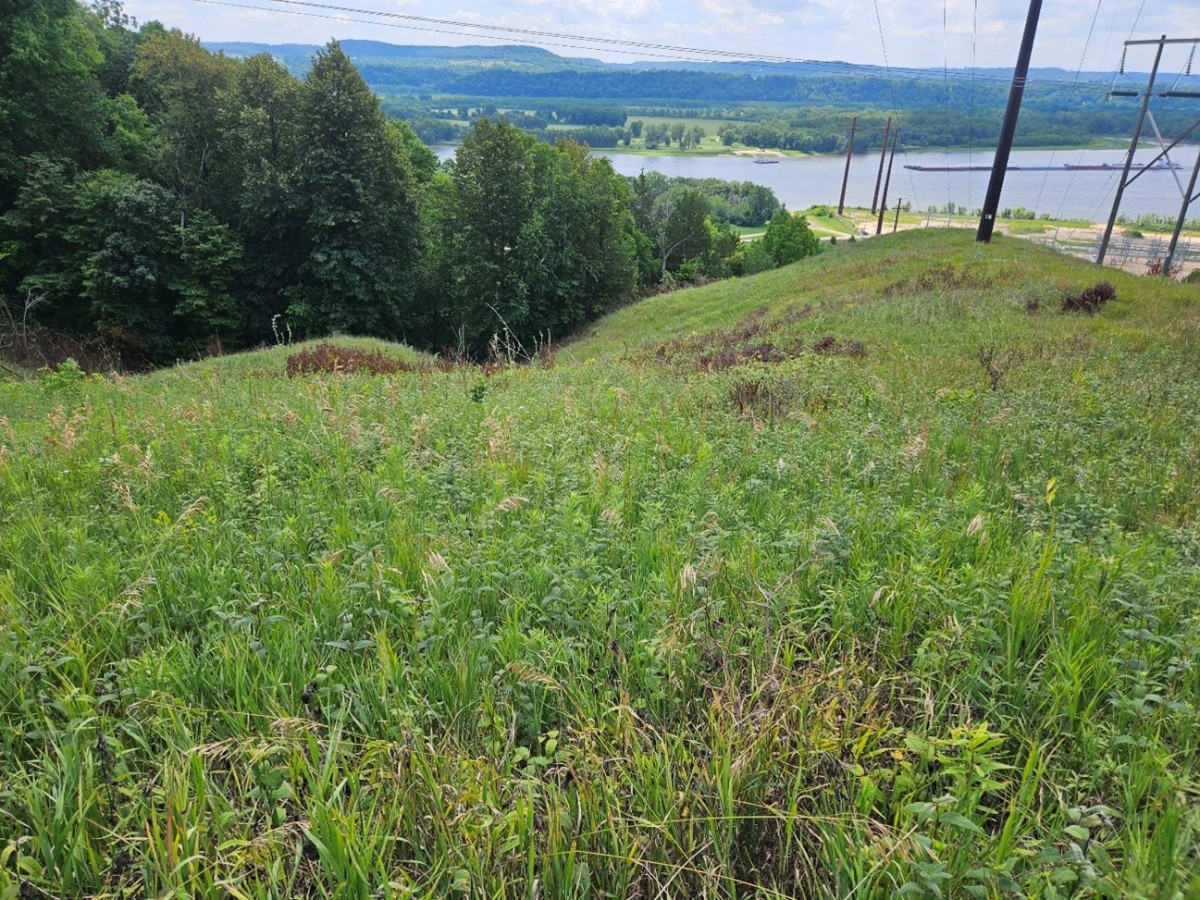In Cassville, Wisconsin, near the former Nelson Dewey Generating Station, we restored approximately 25 acres of land underneath high-voltage transmission lines to native upland prairie habitat. This includes a section overlooking the Mississippi River of high-quality goat prairie with a wide variety of native plants on the steep, rocky bluffs.
What makes a goat prairie special?
Goat prairies don’t necessarily always have goats roaming freely, but they’re characterized by the kind of steep hillsides goats love. They typically face southwest and get a lot of sunlight. They usually have shallow, dry soils and short, sparse vegetation.
In some cases, these prairies have been untouched by development for hundreds of years. Home to many native and rare plants and animals, they’re vital to the survival of many species.
Rare topography
Goat prairies mainly occur along the valley of the Upper Mississippi and in the Driftless Area of Minnesota, Wisconsin, Iowa and Illinois. The region gets its name because of the absence of silt, rock and gravel deposits glaciers left elsewhere in these states after the last ice age.
Glaciers bypassed this region, preserving winding hills and many other features of the original topography. It’s a stark contrast from the otherwise flat terrain you typically find across most of these states.
Many parks preserve the Driftless Area’s natural beauty. The National Parks Service maintains a similar goat prairie at Effigy Mounds National Monument in Marquette, Iowa. The Wisconsin Department of Natural Resources maintains a goat prairie at the Dewey Heights Prairie State Natural Area adjacent to Alliant Energy property as well.
Our own unique goat prairie
Since 2010, we’ve partnered with the U.S. Fish and Wildlife Service on a grant to restore prairies in areas we disturbed constructing transmission lines.
Since we retired the Nelson Dewey Generating Station, we’ve continued to maintain the land as prairie to support diversity of native species, sequester carbon and offer nesting sites for a wide range of wildlife. These efforts ensure native species continue to have a home and thrive, and in this case that includes those special plants and animals that rely on goat prairies.
The goat prairie on our site has been home to native vegetation for hundreds of years. Too steep to farm, it had never been plowed or disturbed by people, but it has faced the threat of invasive species and tree encroachment. We intend to do all we can to protect it for many years to come.
The transmission lines that once carried energy from the Nelson Dewey facility still deliver energy to customers and nearby communities. Our Cassville Solar Project sends clean energy along those lines and our Grant County project soon will too.
Learn more about our steps to protect the environment through our wildlife protection efforts webpage.

A goat prairie in the Driftless Area

Chris Caporale
Communications Partner
Published on January 30, 2024
Chris is a Communications Partner specializing in Alliant Energy’s renewable investments. Coming from a journalism background, he’s excited to tell the story of Alliant Energy’s Clean Energy Blueprint and other renewable trends in new and exciting ways.
Recent Stories
Alliant Energy builds a stronger community with Habitat for Humanity
Our company contributes to Habitat for Humanity in many ways including recent building events with Wisconsin’s Habitat for Humanity of Dane County (HHDC) and Iowa’s Cedar Valley Habitat for Humanity (CVHH).
Read More
Industrial food grade building available in Fort Madison, Iowa
A location now available and potentially eligible for an incentive power rate is a site formerly used to manufacture metal cans for the food industry.
Read More
For Alliant Energy VIP Shannon Self, volunteering takes center stage
Shannon Self is constantly lending a helping hand in her community.
Read More
